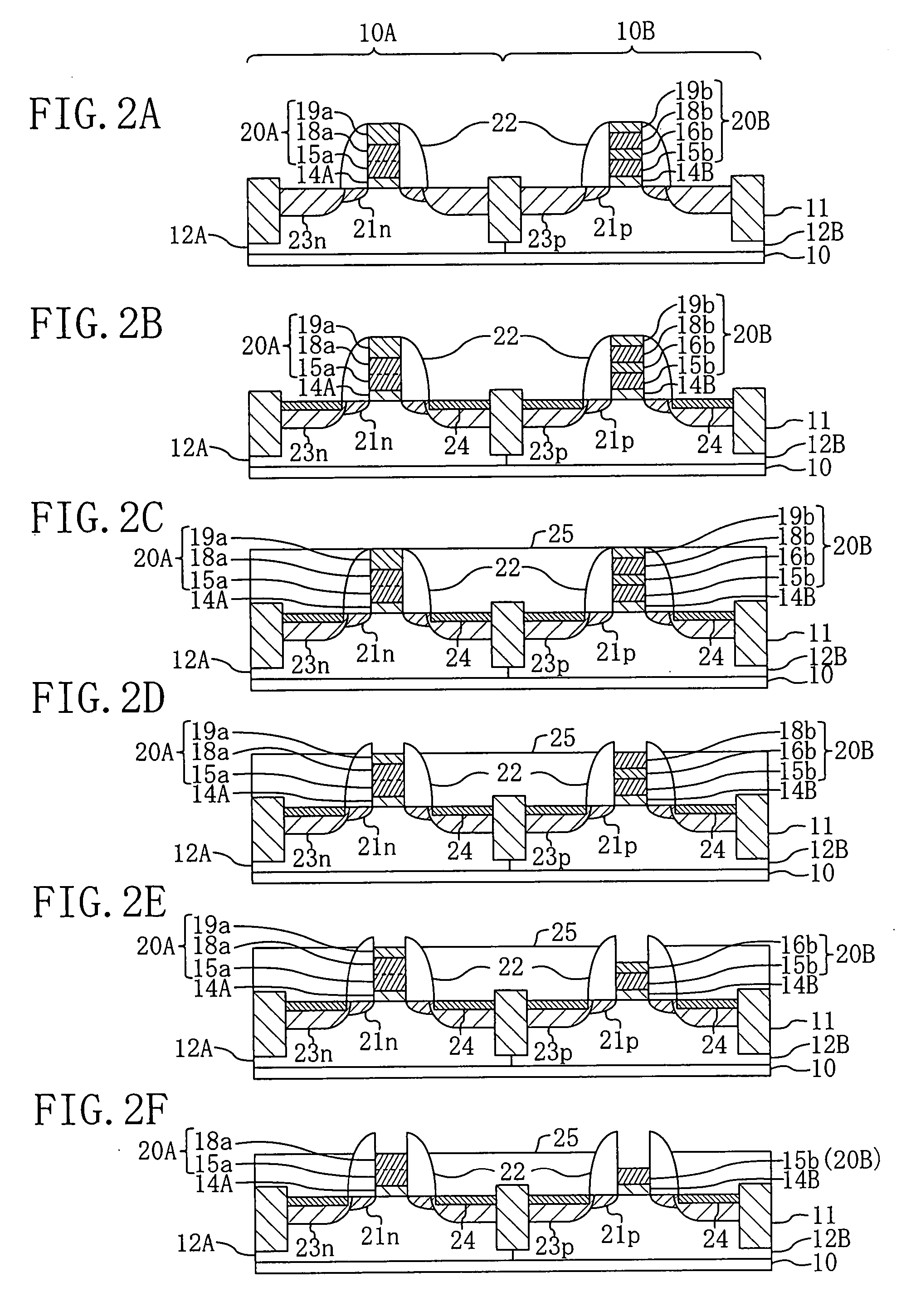Method for fabricating semiconductor device
- Summary
- Abstract
- Description
- Claims
- Application Information
AI Technical Summary
Benefits of technology
Problems solved by technology
Method used
Image
Examples
Embodiment Construction
[0037] One embodiment of the present invention will be described with reference to the accompanying drawings. FIGS. 1 to 3 show cross-sectional structures of successive fabrication process steps of a method for fabricating a semiconductor device according to one embodiment. In this embodiment, description will be made of a method for fabricating n- and p-type MIS transistors in first and second regions 10A and 10B, respectively.
[0038] Referring to FIG. 1A, first, on a semiconductor substrate 10 made of, for example, p-type silicon, an isolation region 11 for electrically isolating elements is provided by an STI (shallow trench isolation) method or the like to form the first region 10A and the second region 10B. Then, by a lithography method and an ion implantation method, a p-type first well 12A and an n-type second well 12B are formed in the upper portion of the first region 10A and the second region 10B, respectively.
[0039] Next, as shown in FIG. 1B, in a region of the main surf...
PUM
 Login to View More
Login to View More Abstract
Description
Claims
Application Information
 Login to View More
Login to View More - R&D
- Intellectual Property
- Life Sciences
- Materials
- Tech Scout
- Unparalleled Data Quality
- Higher Quality Content
- 60% Fewer Hallucinations
Browse by: Latest US Patents, China's latest patents, Technical Efficacy Thesaurus, Application Domain, Technology Topic, Popular Technical Reports.
© 2025 PatSnap. All rights reserved.Legal|Privacy policy|Modern Slavery Act Transparency Statement|Sitemap|About US| Contact US: help@patsnap.com



